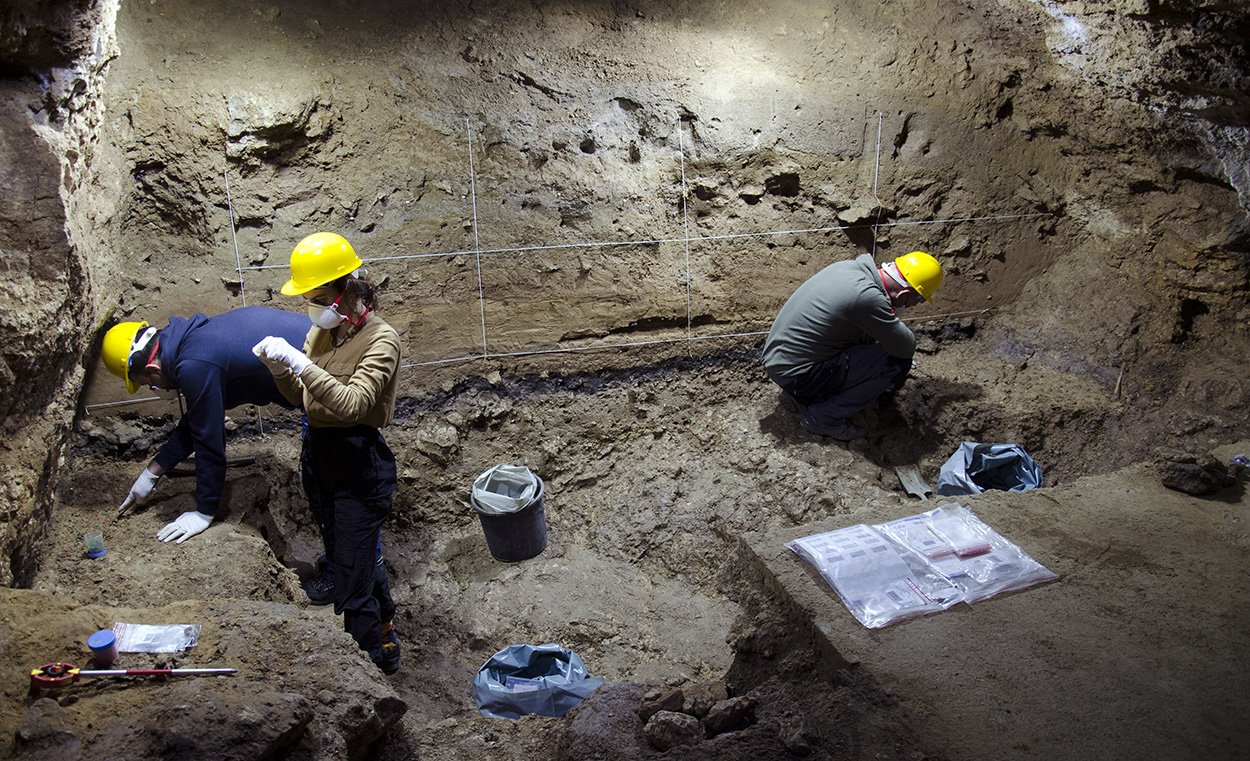The first groups of Homo sapiens arrived in Europe about 45,000 years ago. Until now it was assumed that our ancestors could only colonize the new continent because the climate there became more temperate. But now isotopic analyzes of animal teeth from Bacho Kero Cave in Bulgaria show that this is likely not the case. At the time when the first representatives of Homo sapiens lived in this cave, temperatures there were 10 to 15 degrees below today, the researchers determined. So the climate was as cold as today in northern Scandinavia and Russia. This indicates that our ancestors were more cold-resistant and more adaptable than previously thought.
The great upheaval of Europe began about 45,000 years ago: Neanderthals, who had dominated for hundreds of thousands of years, gradually disappeared, and instead our newly immigrant Homo sapiens ancestors spread out from Africa and the Middle East. The oldest evidence of these new arrivals so far was discovered by researchers led by Jean-Jacques Hublin of the Max Planck Institute for Evolutionary Anthropology in Leipzig in 2020 at Bacho Kiro Cave in Bulgaria. The finds of human bones, tools and animal bones prove that Homo sapiens remained in this cave located about 70 kilometers south of the Danube at the beginning of the Upper Paleolithic (helix). However, comparative DNA analyzes revealed that this group of Homo sapiens was apparently unable to establish itself and reproduce: they left no trace in today’s European genome.
Climate reconstructed 45,000 years ago
The Hublin team has now provided more information about these first migrants to Europe and their time. To learn more about the climate at the time, researchers examined the bones and teeth of animals that were deposited in this cave about 45,000 years ago. In addition to cold-tolerant animals such as mammoths and reindeer, these also include animals whose descendants are found in today’s milder climates, including bison and wild horses. For their study, the scientists took samples of the enamel of bison and wild horses, which were found in the same layer as the remains of Homo sapiens, and examined them for their ratios of the oxygen isotopes O16 and O18. This allows conclusions to be drawn about the prevailing temperatures at that time.
“This time-consuming analysis, which included a total of 179 samples, enabled the production of a very detailed record of past temperatures, including estimates of summer and winter temperatures and average annual temperatures for people in the cave over a period of more than 7,000 years,” reports Hublin Fellow, first author Sarah Pederzani. This study is the first of its kind to quantify climatic data from the beginning of the Upper Paleolithic using finds from a human archaeological site. So far, ice cores from Greenland or sediment samples from the Eifel River, among others, have mostly been used to reconstruct climate history.
Cold as in northern Scandinavia
Analyzes showed that the climate at Bacho Kiro about 45,000 years ago was cooler than previously assumed. Temperatures were on average 10 to 15 degrees lower than usual today, and winters in particular were extremely cold and intense. “The reconstructed oxygen isotope values and temperatures indicate that climatic conditions at the time of the Pacho-Kero Cave settlement are consistent with those in what is now northern Scandinavia and Russia,” the team wrote. “Our reconstructions show that the animals analyzed here – and the people who hunted them – lived under conditions consistent with those of the millennia-long cold periods known from other climatic records from southeastern Europe.” The first representatives of Homo sapiens came to Europe in the interglacial period with moderate temperatures.
The new findings suggest that our ancestors may have been more cold-tolerant and adaptable than previously thought. “We were able to show that these groups of people were more resilient with respect to the environments they used and more able to adapt to different climatic conditions than previously assumed,” Pederzani says. This may mean that Homo sapiens did not have to rely on warm phases during its early colonization of the continents. “On the basis of these new findings, new models of our species’ spread across Eurasia must now be created, which take into account greater climatic resilience,” Hublin adds.
Source: Sarah Pederzani (Max Planck Institute for Evolutionary Anthropology, Leipzig) et al., Science Advances, doi: 10.1126/sciadv.abi464

“Alcohol buff. Troublemaker. Introvert. Student. Social media lover. Web ninja. Bacon fan. Reader.”





More Stories
Huge radiation explosion from a magnetar – forschung.de
Principles and features of the folk nutritional principle
Science: The percentage of women in mint topics rises to a third